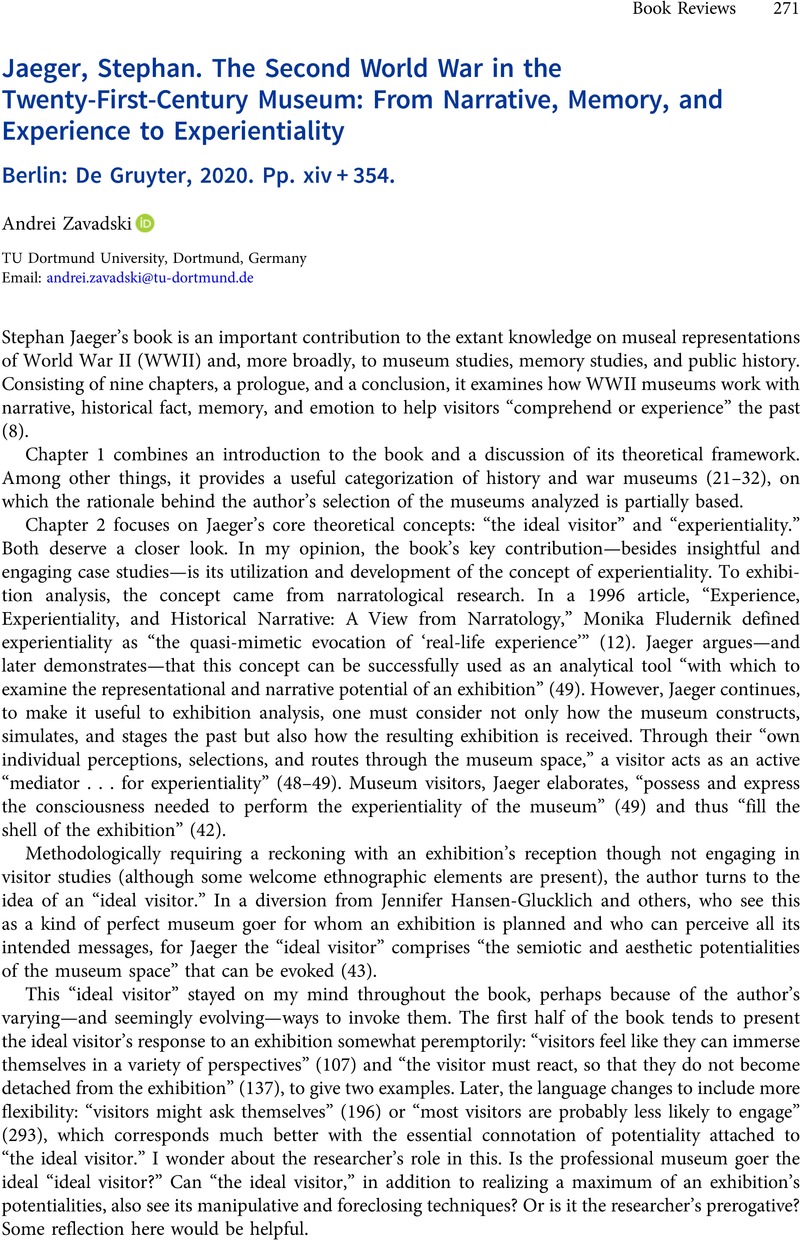No CrossRef data available.
Article contents
Stephan Jaeger. The Second World War in the Twenty-First-Century Museum: From Narrative, Memory, and Experience to Experientiality Berlin: De Gruyter, 2020. Pp. xiv + 354.
Review products
Published online by Cambridge University Press: 12 April 2023
Abstract

- Type
- Book Review: Since 1918
- Information
- Copyright
- Copyright © The Author(s), 2023. Published by Cambridge University Press on behalf of the Center for Austrian Studies, University of Minnesota



